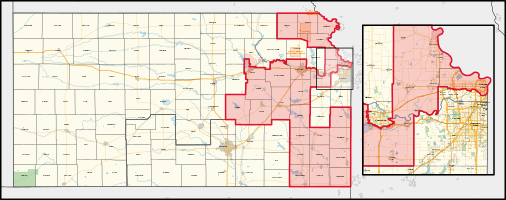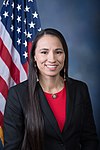Current delegation
| Current U.S. senators from Kansas | ||||
|---|---|---|---|---|
Kansas
| Class II senator | Class III senator | ||
 Roger Marshall (Junior senator) (Great Bend) |  Jerry Moran (Senior senator) (Manhattan) | |||
| Party | Republican | Republican | ||
| Incumbent since | January 3, 2021 | January 3, 2011 | ||
Kansas's current congressional delegation in the 119th Congress consists of its two senators, both of whom are Republicans, and its four representatives: three Republicans and one Democrat.
The current dean of the Kansas delegation is Senator Jerry Moran, having served in the Senate since 2011 and in Congress since 1997.
| U.S. representatives from Kansas | |||||
|---|---|---|---|---|---|
| District | Member (Residence) [3] | Party | Incumbent since | CPVI (2022) [4] | District map |
| 1st |  Tracey Mann (Salina) | Republican | January 3, 2021 | R+18 |  |
| 2nd |  Derek Schmidt (Independence) | Republican | January 3, 2025 | R+11 |  |
| 3rd |  Sharice Davids (Roeland Park) | Democratic | January 3, 2019 | R+1 |  |
| 4th |  Ron Estes (Wichita) | Republican | April 25, 2017 | R+14 |  |